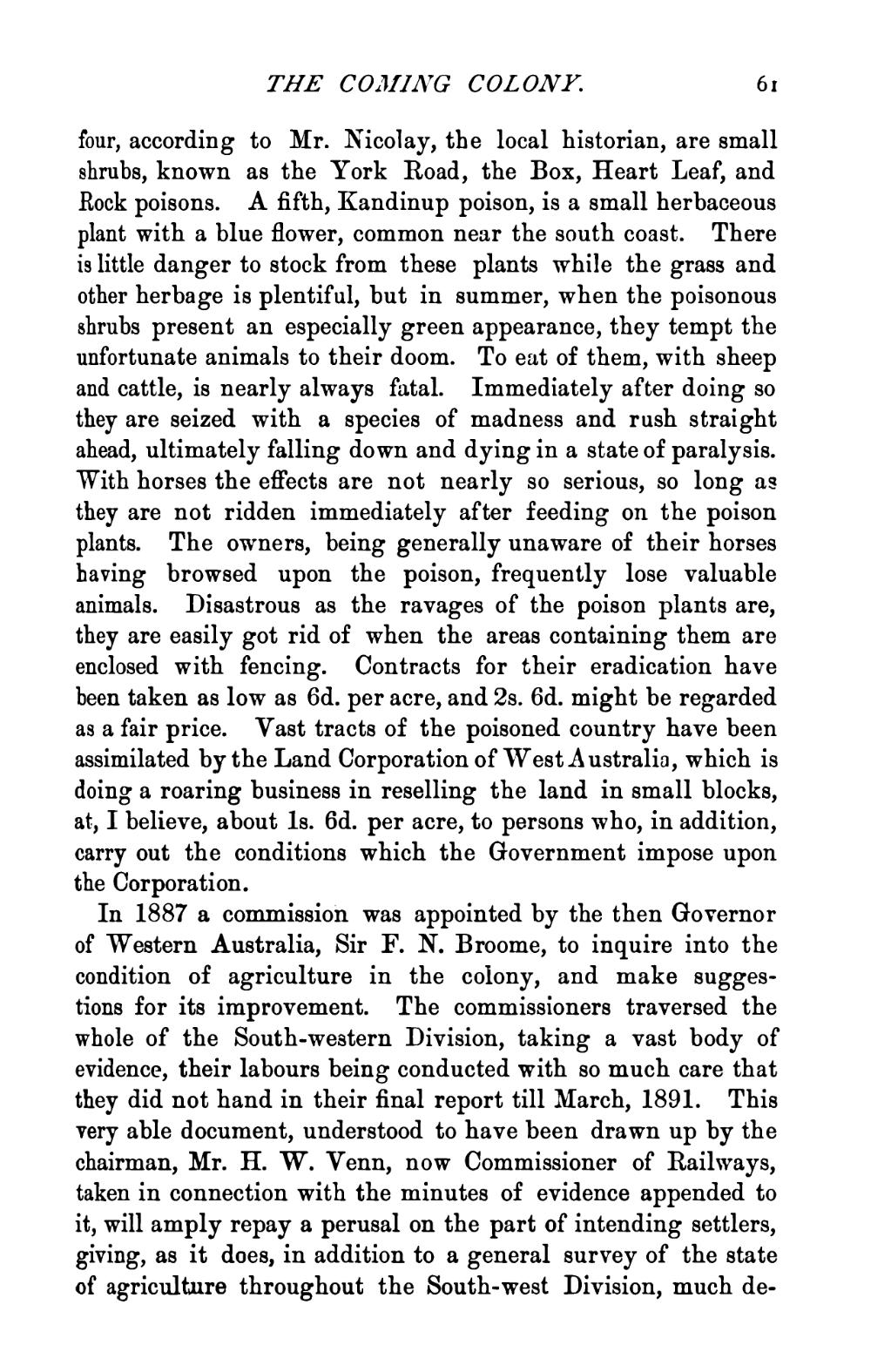four, according to Mr. Nicolay, the local historian, are small shrubs, known as the York Road, the Box, Heart Leaf, and Rock poisons. A fifth, Kandinup poison, is a small herbaceous plant with a blue flower, common near the south coast. There is little danger to stock from these plants while the grass and other herbage is plentiful, but in summer, when the poisonous shrubs present an especially green appearance, they tempt the unfortunate animals to their doom. To eat of them, with sheep and cattle, is nearly always fatal. Immediately after doing so they are seized with a species of madness and rush straight ahead, ultimately falling down and dying in a state of paralysis. With horses the effects are not nearly so serious, so long as they are not ridden immediately after feeding on the poison plants. The owners, being generally unaware of their horses having browsed upon the poison, frequently lose valuable animals. Disastrous as the ravages of the poison plants are, they are easily got rid of when the areas containing them are enclosed with fencing. Contracts for their eradication have been taken as low as 6d. per acre, and 2s. 6d. might be regarded as a fair price. Vast tracts of the poisoned country have been assimilated by the Land Corporation of West Australia, which is doing a roaring business in reselling the land in small blocks, at, I believe, about 1s. 6d. per acre, to persons who, in addition, carry out the conditions which the Government impose upon the Corporation.
In 1887 a commission was appointed by the then Governor of Western Australia, Sir F. N. Broome, to inquire into the condition of agriculture in the colony, and make suggestions for its improvement. The commissioners traversed the whole of the South-western Division, taking a vast body of evidence, their labours being conducted with so much care that they did not hand in their final report till March, 1891. This very able document, understood to have been drawn up by the chairman, Mr. H. W. Venn, now Commissioner of Railways, taken in connection with the minutes of evidence appended to it, will amply repay a perusal on the part of intending settlers, giving, as it does, in addition to a general survey of the state of agriculture throughout the South west Division, much de-
